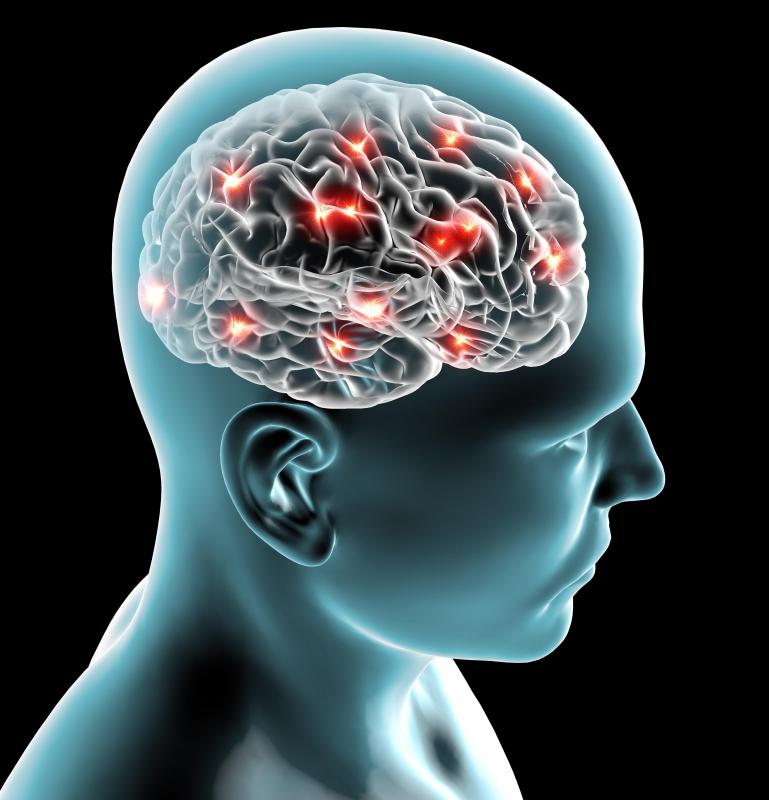At TheHealthBoard, we're committed to delivering accurate, trustworthy information. Our expert-authored content is rigorously fact-checked and sourced from credible authorities. Discover how we uphold the highest standards in providing you with reliable knowledge.
What Is a Mu Wave?
A brainwave is an electromagnetic oscillation created by nerve cells in the brain called neurons, and a mu wave is a specific type of such an oscillation. In the brain, mu wave activity mainly occurs in what is known as the motor cortex, a part of the brain located just beneath the top of the skull. Brainwaves, including mu waves, can be detected by a diagnostic procedure called electroencephalography (EEG) or by magnetoencephalography (MEG), and have been studied since the early 20th century. Research indicates that mu waves are linked to the performance and learning of motor skills, specifically to the brain activity that occurs when a person either performs various types of physical actions or watches others perform such actions. Brain research involving people with autism indicate that this disorder is associated with abnormal mu wave activity, which could make it possible to develop new diagnostic tools and therapies for this and similar neurological disorders.
There are several types of brainwaves, including alpha waves, beta waves, delta waves, gamma waves and theta waves. Mu waves are considered a variant of alpha waves. The various types of brainwaves are defined by the frequency of their oscillations. A mu wave oscillates in a frequency ranging from 8 to 13 Hertz (Hz). Mu waves are sometimes called wicket rhythm, because the graphic wave-pattern they make on an EEG readout resembles cricket wickets.

Studies show that mu wave activity increases when the body and brain are at rest, for example during meditation and sleep. Research also shows that there is less mu wave activity in the brain when a person is performing or watching motor activities, compared to when they are not doing so. However, some people, for example those diagnosed with autism, only show decreased mu wave activity when they themselves are performing physical actions, not when they are watching others. Researchers believe that this discovery can make it possible to diagnose autism at an earlier age by using EEG or MEG, and that it can also lead to new treatments.

Neurofeedback is one type of therapy that proponents believe can be used to treat autism and other neurological disorders. It trains people to increase and decrease mu wave activity in the brain. This can provide ways of treating autism and similar disorders, and can also be used to help people with attention problems. The ability to control mu waves can also help scientists develop technologies where brain activity is used to directly interface with computers.
AS FEATURED ON:
AS FEATURED ON:















Discuss this Article
Post your comments